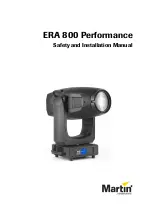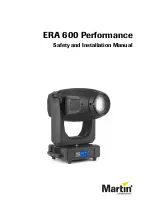
®
M o d e l N o . M E - 9 8 9 2
E x p e r i m e n t 2 : C o n s e r v a t i o n o f M o m e n t u m a n d E n e r g y
15
5.
Perform the analysis for energy and momentum as before. What is the kinetic
energy of the ball immediately after the collision? Why?
When you calculate the gain in potential energy, remember that
h
is the change in
height of the center of mass of the pendulum, not including the ball.
Is this a perfectly elastic collision? What is the percentage of the kinetic energy
lost (converted to thermal energy) during the collision?
6.
Turn the pendulum around and repeat the experiment for catching the ball. (Do
not change the position of the counterweight.) Note that both the rotational iner-
tia and the center of mass (and thus the distance
r
) will change due to the ball
being in the catcher.
7.
For the two cases (ball hitting the bumper and ball being caught), compare the
angular velocity of the pendulum just after the collision. Compare the maximum
angular displacement for the two cases. Which type of collision causes the
greater angular displacement? Why?
Further Study V: Alternative Determination of Rotational Inertia
In the procedure above, you found the rotational inertia of the pendulum by applying
a known torque and measuring the resulting angular acceleration. An alternate
method is to measure the period of oscillation.
For a physical pendulum of rotational inertia
I
and mass
M
, the theoretical period (for
low-amplitude oscillations) is given by
where
r
is the distance from the axis of rotation to the center of mass of the pendulum.
Measure the period of the pendulum (with a low amplitude) and calculate its rota-
tional inertia. Compare this to the answer you got by applying a known torque.
T
2
I
Mgr
-----------
=



































